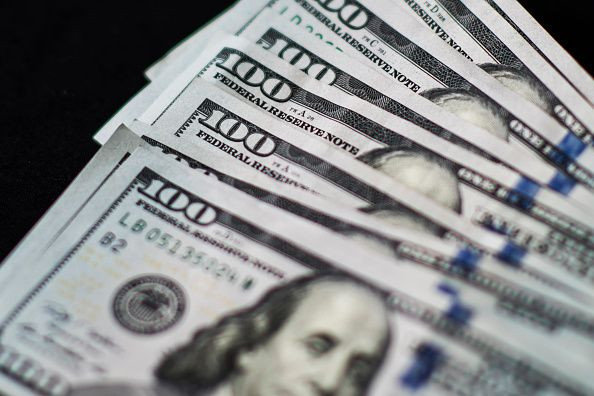Rising US Inflation Would Take Bite Out Of Dollar, Financial Watchers Say

Currency market strategists are predicting greater weakness in the U.S. dollar over the next few months, as the Federal Reserve seems to have closed the door on interest rate hikes through the spring and left the greenback alone with a destructive bedfellow: rising inflation.
With the Fed's policy statement in March and remarks from Fed Chair Janet Yellen later in the month striking a cautious tone, strategists say this has set the stage for a rough patch for the dollar over the near-term as inflation nips at it.
U.S. inflation has firmed in recent months, with the core Consumer Price Index rising 2.3 percent in the 12 months through February to mark the largest increase since May 2012. The core personal consumption expenditures price index, which is the Fed's preferred measure, gained 1.7 percent in the 12 months ended in February.
The core inflation readings exclude food and energy prices. The Fed is targeting a 2 percent core PCE reading.
Inflation typically undermines the dollar's strength by diminishing its spending power. Differences in inflation rates between the United States and the eurozone have been the main force behind the dollar's value against the euro since 2000, according to a research report from Fundstrat Global Advisors.
While expectations for higher inflation once tended to ramp up bets on a swifter pace of Fed rate hikes and, in turn, boost the dollar, strategists say the perceived improbability of a Fed rate hike until at least June has reinstated inflation’s traditional role of eroding the dollar’s value.
"If inflation in the U.S. is relatively high, but interest rates aren’t expected to move higher... that doesn’t ultimately bode well for the dollar," said Shahab Jalinoos, global head of FX strategy at Credit Suisse in New York.
Jalinoos sees the euro hitting $1.17 against the dollar within the next three months. That suggests 2.7 percent more downside for the dollar against the euro.
Ian Gordon, foreign exchange strategist at Bank of America Merrill Lynch in New York, says the Fed could wait before hiking rates even if core PCE reached its 2 percent target. He notes Yellen expressed skepticism last month that gains in inflation were sustainable.
A Reuters poll on Friday showed the median expectation among top Wall Street banks that deal directly with the Fed was for a year-end inflation rate of 0.875 percent, implying just two rate hikes this year.
Gordon says investors have to be cautious in boosting long-dollar positions "over the coming months until we get more evidence that the pickup in inflation is sustainable and the Fed is going to respond to it."
Data from the Commodity Futures Trading Commission released on Friday showed speculators slashed their bullish bets on the dollar to the lowest in nearly two years.
The greenback has an advantage over regions such as Europe and Japan, where yields are extremely low given ultra-accommodative monetary policies. U.S. 10-year Treasury notes last yielded 1.73 percent, compared with a 0.10 percent yield for the 10-year German Bund.
But the dollar has already tumbled this year on traders' views that the Fed would not be able to follow through with the four rate hikes it projected in December. The Fed confirmed traders' skepticism last month by cutting projections to just two rate hikes.
The dollar index, which measures the U.S. currency against a basket of six major currencies, fell 4.1 percent in the first quarter, its biggest quarterly percentage drop in five and a half years.
Thomas Lee, managing partner at Fundstrat in New York, says the index would likely fall another 5 percent or so by summer.
"I do see USD downside," Lee said. "(The Fed) is likely to be very patient" despite rising inflation.
© Copyright Thomson Reuters 2024. All rights reserved.







